© Christoph Petermann DF9CY 2007
Last Revision: 20 November 2007
About
In 2006 I operated on 40m with a vertical antenna for a while. The lower end was about 2m above ground and the top of the antenna reached a little over 12m. This gave me a full size antenna for the 40m band. I had no space for more than 2 radials. One of them had to be bent by 90° after half of the run. I had to tune a little bit. This was done by adjusting the lengths of the two radials.
Performance
I had the antenna up for about 4 months and made about 100 QSOs with it. I worked Southern African countries a few times and Canada (VO1) twice. European stations were at low levels, which is natural for this kind of antenna. SWR was low over the whole 40m band. The antenna picked up a lot of noise which I could not damp down with the help of ferrites.
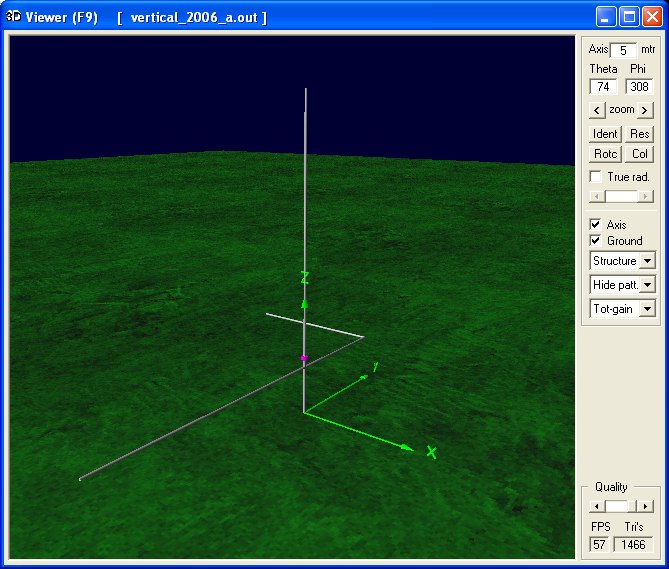
NEC "Portait" of the 40m vertical antenna.
Antenna Diagrams
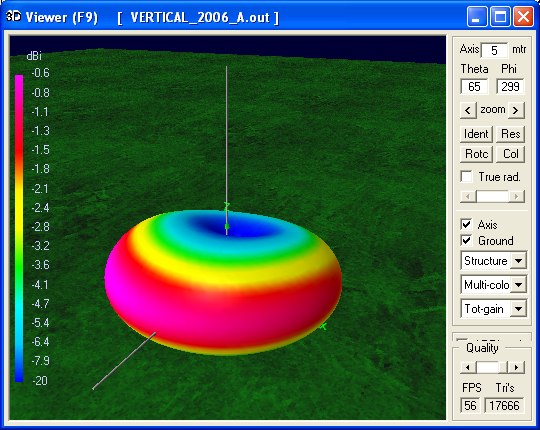
3D pattern of the vertical antenna. Propagation is flat on
the ground with more than 10 dB reduction in the vertical
direction.
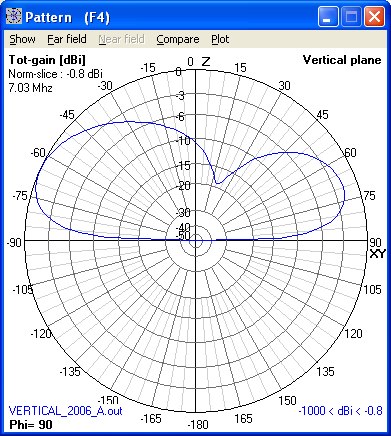
Vertical slice of the antenna pattern. Maximum gain is only
-0.8 dBi.
Compared to ...
... a full size monoband dipole. In 2007 I put up a monoband dipole (see also here) which works quite well. It outperforms this vertical antenna easily. WHY ?
Diagrams
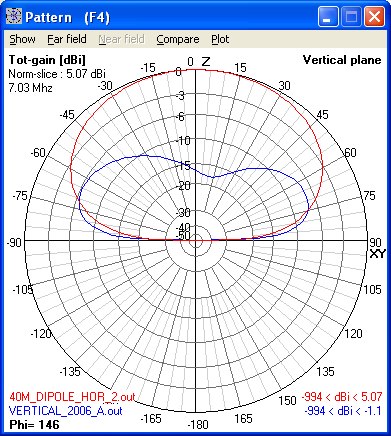
The antenna patterns of the dipole overlayed to the vertical
antenna. Only at very low angles the vertical antenna is a
little bit better in performance. At any other direction the
dipole IS strong.
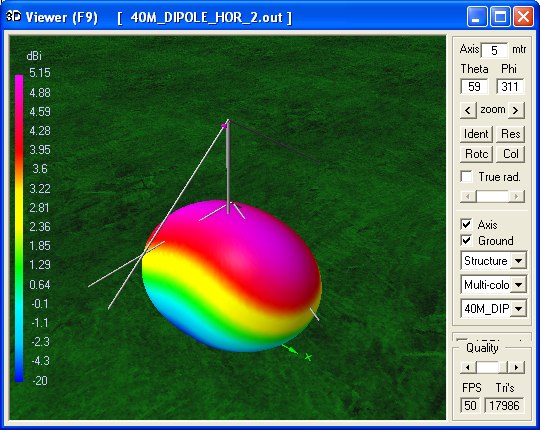
Outcome ...
The practice shows a clear advantage of the dipole against the vertical antenna. The simulation confirms this clearly.
Full Size Elevated Groundplane
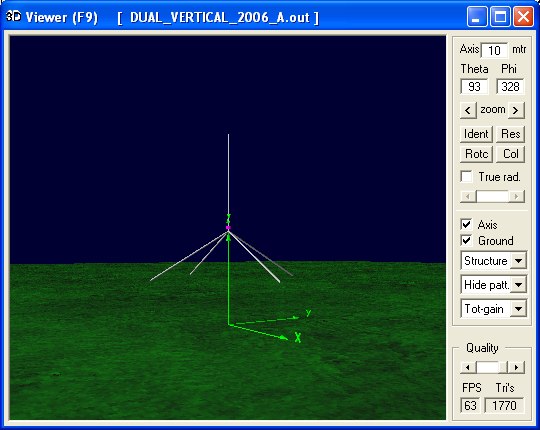
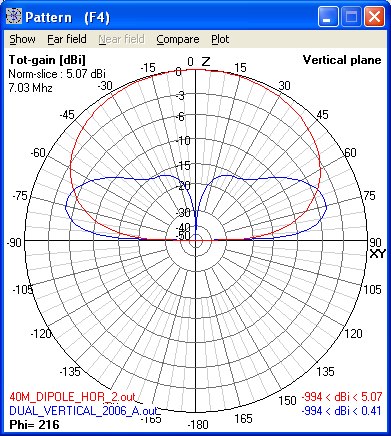
A full size Groundplane which "sits" on top of a tower is estimated to perform very well. At low angles this is surely true as this simulation shows.